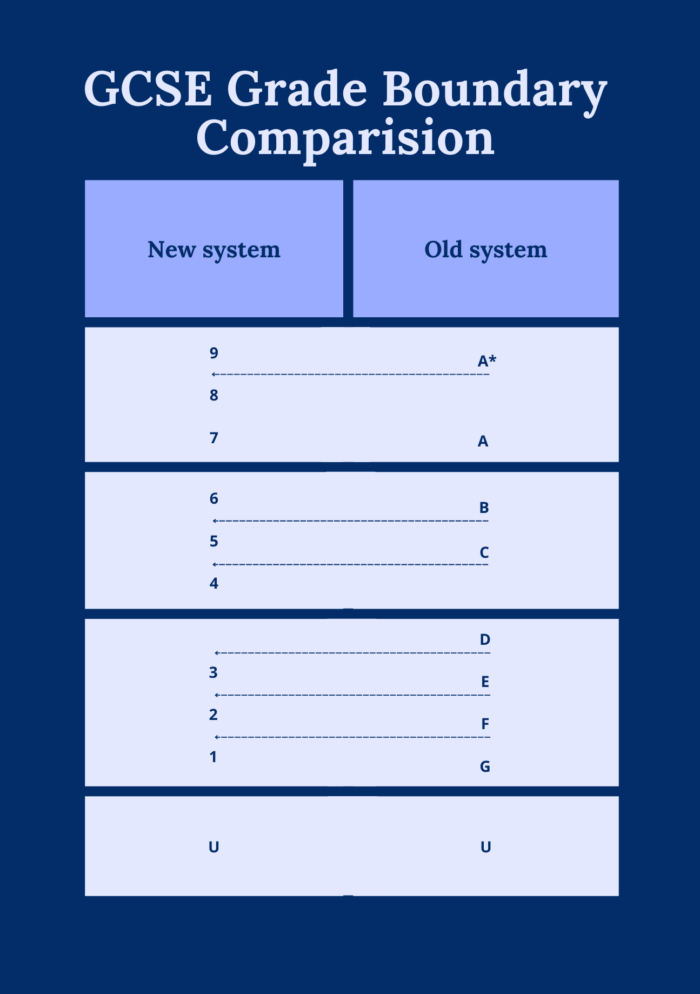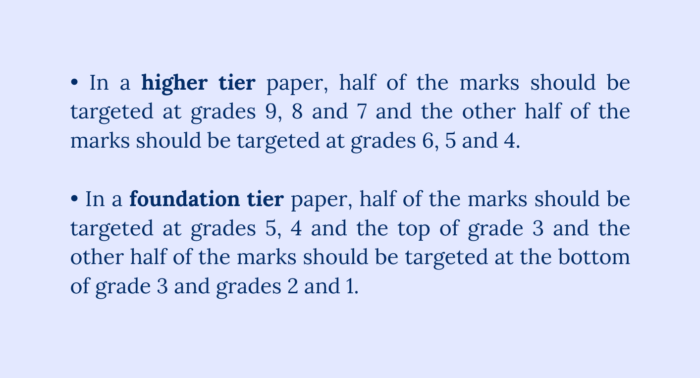
In 2017 GCSE Maths grade boundaries, (along with English and Science), switched from A*- U to the numerical system of 9 – 1. Gradually the rest of the GCSE subjects followed suit and since 2020 all exam boards follow the numerical grading system.
The new grading system was put in place to differentiate between students achieving higher grades. In previous years when large amounts of students received higher grades, in particular an A*, it became difficult to for exam boards to accurately assess their achievements. As you can see from the table below, grades 7 – 9 cover what was A and A*. An 8 is now a high A, (or a low A*), and similarly a 5 is now a high C, (or a low B). A grade 9 is considered to be higher than an A*, indicating that a student has truly achieved an exceptional level in their exams.

All GCSE courses are now examined at the end of the two year course, instead of in modules along the way or through coursework. Of course, this change benefits some students and makes things more difficult for others. Ultimately, the hope is that sixth form colleges and universities gain a clearer idea of how a student is performing.
Examiners set grade boundaries on an annual basis determining the grade a student is awarded. Grade boundaries are published on results day after all the exam papers have been marked. Once complete the examiners judge the overall difficulty of the paper as well as compare it to previous years. Taking these factors into account the grade boundaries are set. The idea is that this process makes the assessment both fair and consistent for students and future colleges and employers.
In the 2022 exam series, exam boards have indicated that there will be a fair and gradual return to pre-pandemic grading standards. However, more generous grading will be awarded this year.
Read More > How to Find the Right A Level Maths Tutor
Yes! Using the raw GCSE Maths grades from 2019 – e.g. pre-pandemic we can guess what the boundaries might be in the 2022 exam series. The grade boundaries are available on examination board websites for both the higher tier papers and foundation tier papers. This gives you a good idea of where each boundary for the 2022 exams might lie:
Since 2017, Ofqual set some new rules for examination boards designed to keep the papers and subsequently GCSE Maths grades consistent. For instance, higher tier papers must strike a balance of content for those aiming for grades 7-9 and those for grades 4-5. To ensure the difficulty of the paper is suited to a range of levels, the rules are as follows. Read the full Ofqual article here.

Related:
How to Revise for Maths GCSE
How Good are Your Study Skills?
GCSE Maths is Becoming a Real Struggle, Help!
How to Beat Exam Stress